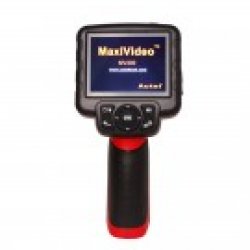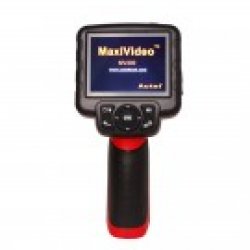8 Things You Need To Know About Back-Up Camera

8 Things You Need To Know About Back-Up Cameras
How They Work and What’s Coming Next
Published: 05/19/2014 – by Michelle V. Rafter, Contributor
2014 GMC Acadia Rearview Camera Display
The 2014 GMC Acadia comes with a standard rear-vision camera that shows what’s in back of the vehicle on a high-definition screen. | May 19, 2014 | General Motors Corporation
On the evening of October 19, 2002, pediatrician Greg Gulbransen walked out his front door to move the family’s sport-utility vehicle into the driveway. Unbeknownst to him, his 2-year-old son Cameron followed. Gulbransen was backing up when he felt a small bump, discovering only after it was too late that he’d accidentally run over and killed the boy.
Back-up accidents involving a small child inadvertently hurt or killed by a family member driving away from home happen all too frequently. Driving safety advocate Janette Fennell even has a name for them: the bye-bye syndrome.
Installing a back-up camera on an existing car isn’t difficult. Some require only a screwdriver, while others require a drill to mount the camera into a rear bumper cover. Some aftermarket camera makers post videos on their Web sites to help DIYers with step-by-step set up instructions auto diagnostic scanner tool, and many auto parts retailers do installations.
6. Grime, weather and time of day can affect how a camera functions.
Whether they’re factory installed or aftermarket equipment, rearview cameras don’t need much more maintenance than a periodic wipe-down to clear away accumulated grime from the camera lens. In heavy rain or snow, auto company representatives and aftermarket camera sellers suggest checking before you drive off to make sure the lens isn’t obscured.
Some automakers have come up with clever ways to keep rearview cameras clean. Select 2014 Nissan Altima, 2014 Nissan Rogue and 2014 Nissan Murano models have a built-in rearview camera cleaning system that sprays water from a small tank to clean the lens, and then squirts a puff of air to dry it.
Even though back-up cameras can help prevent accidents, automakers and retailers warn drivers not to rely on them completely. Drivers should continue checking side and rearview mirrors, and look over their shoulder to see what’s in back of them. “There are certainly sometimes conditions where performance of the system might be not as optimal as in other conditions. That’s one reason we’ve had our systems focused on being an aid,” says Tony Baehner, Nissan’s chief spokesman on back-up camera technology. “If visibility is limited and it’s dark and you can’t see, a camera of any system is going to be sensitive to some of those.”
Manufacturers also instruct auto dealers to give anyone buying a new or used car with a back-up camera system a walkthrough of the system before they drive off the lot so they understand how it works.
7. Back-up cameras may prevent accidents, but they might not lead to lower insurance rates.
NHTSA and IIHS may be convinced that rearview systems save lives, but auto insurers could take decades to adjust rates for customers who use them, and one insurance industry representative says even if rates drop, the decrease could be tiny.
For insurers to give discounts, insurance actuaries would have to compare data from sufficiently large pools of vehicles with and without the systems to determine whether the cameras make a difference. That won’t happen any time soon, since NHTSA predicts it will be 2054 before all . cars on the road have back-up systems, says Loretta Worters, vice president of the Insurance Information Institute, an industry trade group.
In addition, once all . vehicles have rearview systems, the equipment is expected to save a relatively small number of lives – fewer than 70 a year – compared with tens of thousands of people killed in traffic accidents. As a result, any rate decrease could amount to “well under $1 per policy,” Worters says.
But, she says, “there may be fewer accidents because people back into less stuff, which could justify a discount on bodily injury, property damage and collision.”
Instead, technologies such as collision avoidance systems and telematics show more promise for providing trackable data that could lead to lower insurance rates, she says.
At least one insurer sees things a little differently. According to State Farm spokesman SevagSarkissian autel maxicheck pro, back-up cameras could lead to lower car insurance rates if makes and models that have them wind up in fewer accidents. State Farm doesn’t provide discounts for specific vehicle safety equipment, but does collect claims information for specific makes and models, Sarkissian says. “To the extent a specific type of vehicle safety technology that is standard on a particular make and model of vehicle is effective in reducing the frequency and severity of crashes, it will be reflected in our claims data,” he says. As a result, particular makes and models may have lower insurance premiums, he says.
8. Back-up cameras are helpful for more than avoiding accidents. Wait until you see the camera technology that’s coming next.
Though intended to serve as safety devices, back-up cameras also can be used to help drivers do a better job of backing into a parking spot or hitching a trailer.
Nissan offers an around-view monitoring system on certain 2014 Pathfinder, Quest, Rogue and Versa Note models that comprises four cameras mounted on the license plate holder, front grille and side mirrors. The setup is designed to be a parking aid and has become a big selling point, according to Nissan. Customers “are typically wowed by the feature,” says Baehner, the Nissan manager. “Most of our research shows they are highly desired features.” Once you have them, they want them, he says.
Ford’s highly touted all-aluminum 2015 F-150 truck will also feature four cameras – on the front grille, rear bumper and side mirrors – for better maneuverability, with images transmitted to an 8-inch touchscreen in-dash display.
Tesla is experimenting with replacing sideview mirrors with cameras to improve vehicles’ aerodynamics and fuel efficiency. The company and the Alliance of Automobile Manufacturers have filed petitions with NHTSA seeking permission to use cameras in place of sideview mirrors, which are required under . auto safety laws. Volkswagen recently got an exemption from European auto safety rules to road test 200 XL1 concept cars that have cameras instead of sideview mirrors. The goal: to see how sideview cameras work, and whether drivers like them, says Zorn, the company’s safety affairs general manager.
To find a dealership that knows how to treat shoppers right, please visit ‘s Dealer Ratings and Reviews.
Related Links





Ingen kommentarer endnu